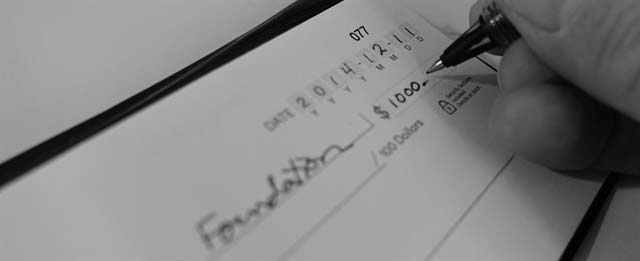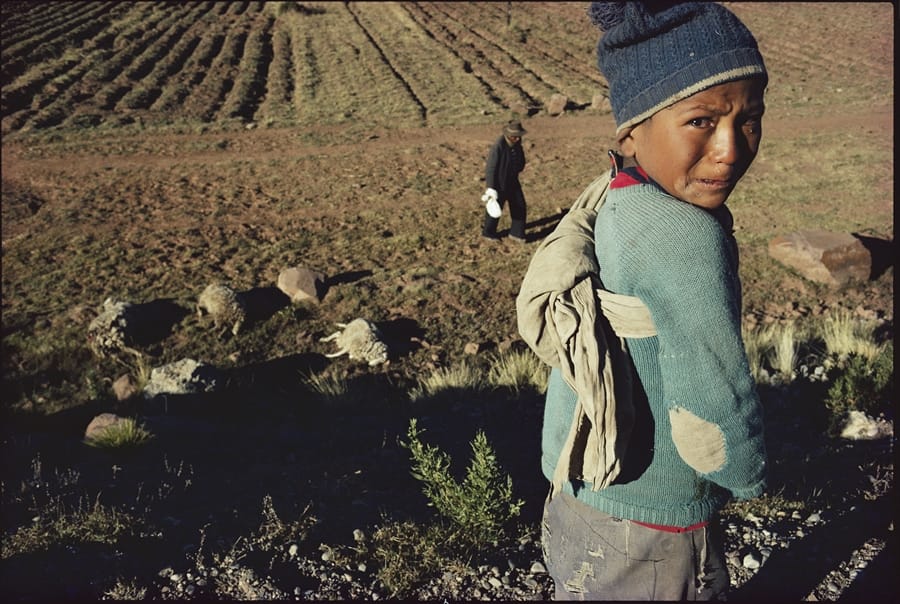Jeff Kaufman and Julia Wise are a young couple living in Boston. Jeff is a software engineer at Google and Julia is a social worker. For the past few years they've been giving away nearly 60% of their after-tax income to charities working to reduce poverty and save lives in developing countries. Despite a combined income well into the six figures, they spend little more than $15,000/year on themselves. Since 2008 they've given away more than $250,000.
That's a lot of money, and it sounds like a big sacrifice. But they insist that it isn't. In her blog, Julia writes, “The things we love most—spending time with family and friends, making music, dancing, cooking, reading—are all things we can do on a small budget. If we gave less, we would spend more on ourselves but probably wouldn't be noticeably happier.” She says that giving is one of the most important things in her life, and she does it because she believes that “people—all people, even far-away people—should not have to suffer and die needlessly.”
I share that belief. My giving is a drop in the bucket compared with that of Jeff and Julia, but still I managed to donate about 11 percent of my income last year, the majority of it to charities working to save or improve lives in developing countries. And I want to give more.
What I've found is that giving large is different. When you make a significant donation, there's a sense of contributing to a mission, of making a tangible impact, of feeling like you count. You don’t have to give a lot to make a difference: it only costs about 30 U.S. cents to deworm a child in India or Kenya, for example, and the cost to purchase and distribute an anti-malarial bed net in Malawi or the Democratic Republic of Congo ranges from about $5 to $7.50. But if you can afford to scale up those numbers by giving more, you can help improve the lives of hundreds or even thousands of people.
I used to give token amounts to charities, mainly to assuage feelings of guilt or to indulge feelings of generosity during the holidays. But about 10 years ago my partner and I were watching a television news story on a small soap-making cooperative in Afghanistan. The cooperative provided jobs for Afghan women and an alternative to poppy-growing for Afghan farmers. Its founder overcame formidable obstacles (including threats to her life) to set up the enterprise, and we were moved by the courage and resolve of everyone involved in the project. At the end of the show, my partner turned to me and asked, “how can we help these people?”
I went online and found the cooperative's website, and saw that they had a wish list. Most of the items they needed were small and inexpensive, things I could easily afford to buy and ship. But one item drew my attention: they wanted a couple of solar-powered electric generators. I was ready to do something big. I got in touch with the group, and after a few weeks of research and discussions (and a lot of time working out logistics), my generators were purchased and on their way to Kandahar. When the founder of the cooperative sent me an email saying that her message was made possible by my generators, which were providing power for her internet connection, I felt like I'd made a difference.
I feel the same way today when I give to an effective charity like the Against Malaria Foundation (AMF), which assigns each donation to a specific distribution of nets. I can track my donations online and see how many nets they funded, along with where those nets ended up being used. The nets I funded last year will ultimately protect nearly 3,000 people, according to AMF’s estimates. That’s a lot of people, and seeing numbers like motivates me to do more.
When I first decided to start giving larger, my philosophy was “give til it hurts.” When I bought the solar generators for the group in Afghanistan, I used some of the money I’d been saving for years to buy our first home. I felt okay with that, because I thought giving should involve some sacrifice on my part. But I look at it differently now. Over the past decade I’ve made an effort to examine my possessions, my habits, and my lifestyle with a goal of pruning out what I don’t need or what doesn’t bring me happiness. It’s similar to the approach of the organizational consultant Marie Kondo: she tells her clients to take all the clothes from their closets, dressers, and shelves, dump them in one big pile on the floor, then pick up each item, hold it, and ask themselves if it “sparks joy.” If not, that article of clothing gets sold or given away. She then tells them to apply a similar process to their books, papers, and other possessions. The result is that when they look around their living space, everything is there because they deliberately chose to keep it, because it sparked some feeling of joy. That makes them happy. They lose the urge to buy more and more clothes and other things, because they’re satisfied with what they have.
When you apply this process to all aspects of your life, it moves you toward what Julia Wise described above: you discover that you don’t need to spend a lot of money to find happiness and pleasure. Even on a modest income you may find that you can live happily and have money left over for giving without feeling like you’ve made a sacrifice. The philospher Toby Ord did something like this when he figured out how much money he would need each year to fund a simple but comfortable lifestyle, and then publicly pledged to give everything he earned above that amount to effective charities every year for the rest of his working life.
Not everyone can afford to give large: you either need to earn a comfortable income or find ways to live well below your means. Those options aren’t available to everyone. But if you think you can afford it, try giving larger to see how it feels. As Julia Wise writes, “You don't have to be rich to be generous. It might be easier for people with heaps of money, but those of us who have to think about rent and groceries can still do a lot. My grandmother donated 10% of her income for as long as she controlled her own money, even when she was living off social security checks.”
For me, it boils down to this: There are plenty of other things I could do with the money I give away to effective charities each year, but I can't think of anything better to do with it.



